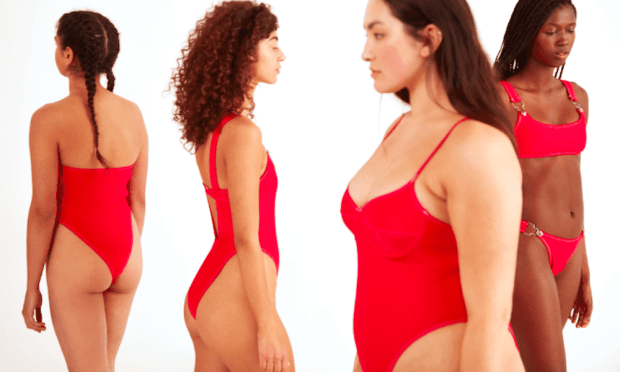Riding The Eco-Friendy Wave Into Swimwear

As of 2019, swimwear is among the favored startup paths for apparel founders looking to edge into the market. PYMNTS has covered several of them, and they all paddle into the market with some interesting idea or innovation on how to improve a retail experience that has a long and storied history of leaving shoppers cold. Some have invested in custom sizing; others have sought to streamline the shopping process.
For Vivek Agarwal, the founder of swimwear label OOKIOH, the innovation was two-fold. First while studying engineering at Cornell, he realized that while he tended to think of a bathing suit as a seasonal item, the modern, more travel-friendly world was rapidly making that perception out of date.
“During my days at Cornell, I saw that my friends and classmates would go to the beaches in Latin America and Asia over winter and spring breaks to escape the bone-chilling upstate New York weather,” Agarwal explained to Fashionista. “I realized that swimwear was no longer a ‘summer accessory’ or relegated to the coasts. And, people are traveling much more than they used to. That realization — along with my bug to get into the industry — led to the birth of OOKIOH.”
Agarwal’s initial ambition was not to be a swimsuit entrepreneur — he was studying mechanical engineering when he had his big breakthrough that led him to the business, but he had always been interested in the fashion industry. OOKIOH, the brand name eventually chosen, is a play on the Japanese word Ukiyo, which translates literally to “the floating world,” or more loosely as “the pleasure-seeking lifestyle of the Edo Japan period.”
What that translates into in practical terms is brightly colored, fluorescent one- and two-piece swimsuits that are described as having their color palette borrowed from the 1980s, their cut and styling ripped from the mid-’90s and a minimalistic yet eye-catching aesthetic that seems to almost cry out to be photographed and quickly posted on Instagram. The design aesthetic — largely attributed to the all-female design team at OOKIOH — brings a focus on making a product that is lovely to look at and incredibly sharable, but also one that ranks as being eminently wearable. The world doesn’t lack for “boutiquey bathing suits” but a surprising number of them advise the wearer not to get them wet, which seems to misunderstand the purpose of the garment entirely.
More than the design vision, he said, OOKIOH has also from the start billed itself as an eco-friendly brand focused on sustainability. That means at launch 80 percent of the material in its suits were recycled — and as of today the brand’s website notes that figure is now at 100 percent. Eco-friendly, Agarwal notes, was critical to OOKIOH in its founding days, but the firm also realized early on that simply making a “green” bathing suit wasn’t enough. It also had to be priced so that it was a viable alternative to the mass market.
“Sustainable and eco-conscious apparel is generally associated with higher prices,” he said. “We believe that if we make it affordable, we will make it accessible to more customers and, consequently, the true value of creating such products — i.e. more recycling and less usage of virgin materials — will be achieved. Expensive and inaccessible eco-conscious lines beat the purpose of making it.”
For accessible pricing, the average one-piece suit on the site runs a little under $100, while bikini top and bottom separates price out at a little under $50 apiece.
There are still issues with sustainability and swimsuits to be solved, he said, beyond merely fixing the issues of sourcing — moving to recycled materials is a good start, but it is not an end point. Part of the solution, given that swinwear does not biodegrade once it enters a landfill – is to simply purchase a bit less of it, and wear it longer
But for OOKIOH, starting someplace and building from there is better than never starting.
